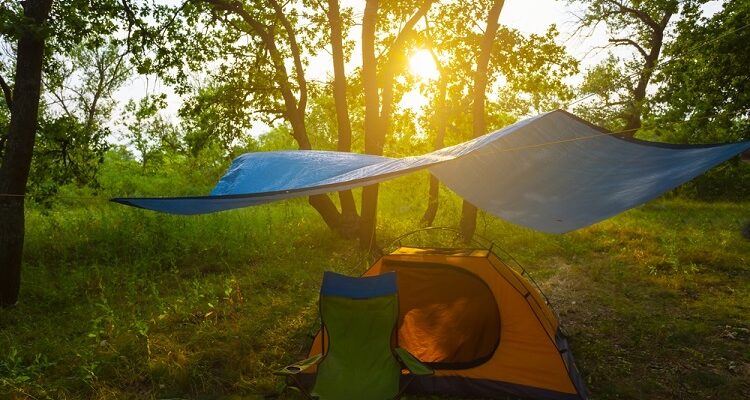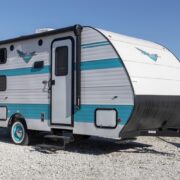Planning for a camping trip at a remote location can be intimidating fro even experienced survivalists, as well as those who are new to camping. It can be overwhelming because there are many things on the camping checklist and having a clear understanding of all the issues one might encounter is daunting, to say the least. One of the items that are often overlooked but incredibly important for improving safety and comfort is to include have a tarp to for individual issues you will face at your camping location.
Table of Contents
Plan Early and Visualize your Camping Site
When planning a short camping excursion, most experienced campers immediately focus on tent, stakes, sleeping bags, pads and pillows, lanterns, headlamps, flashlights, batteries, table and chairs, fire starters, cooking gear, water, water purification, foodstuffs, and perhaps hunting gear. However, for longer term or more protracted periods of camping in remote or rugged location situations, a tarp can be used to improve safety and comfort. In short, tarps are now recognized as an indispensable addition to your gear.
By example, for high elevation or high temperature surroundings, a white tarp can be suspended over-layed over and staked over your tent to reflect high intensity sunlight and associated ultra-violet radiation. Alternatively, the white tarp can be used as a windbreak and a means to reflect campfire heat. Also, a white tarp place directly under the tent floor, can provide a layer of protection that help prevent piercing of the tent floor, as well as providing a layer of insulation and a means to readily view anything that might crawl under the tent (i.e., snakes) when it is time to break camp.
Another frequently sought after solution is using Camouflage Tarps in the context of covering a tent in a woodland or forest related camping site where falling branches, ice or snow have the potential to pierce the tent.. Hunters can also use the Camouflage Tarp to help the tent blend in with the surroundings, as well as allowing for dual use as a hunting blind.
Many also appreciate the use of a tarp for suspending foodstuffs or game from a tree branch and otherwise avoiding the attraction of predators to your campsite. In this case, a brightly colored tarp may be the preferred selection, or if there are concerns of theft, use of a Camouflage Tarp may be best.
In like vein, tarps can be used to create comfortable suspended bedding or hammocks. In this case, its’ best to select one with grommets, and if you are extra heavy, you might want to make sure the edges feature double stitching.
In the realm of campsite comfort, a tarp can also be suspended over the entrance to your tent in order to create an area that provides protection from rain or snow. Underneath this area, laying down another tarps is yet another means to reduce the intrusion of crawling insects, while provide on the ground seating that’s clean and dry. This is an especially nice comfort feature when preparing food.
In all events, a checklist is needed when packing all your gear. There are basic needs to consider, which include a place to sleep and a tent is necessary for this purpose. To cover the tent, you can opt for for heavy-duty and suitable for all-weather use. The advantage of the tarp is that it does not fade quickly; its white color reflects heat and allows light to pass through. Something to keep you warm when sleeping is essential, and sleeping bags are needed. Below are several factors to consider when planning a camping trip.
Carefully Consider Your Location and Terrain
Start by determining the type of camping you want to do. Considering where to go camping is essential. However, connecting with nature is important, and you should choose a location with all the activities you want to participate in. Research the campsite and the area to range details such as the amenities available. Looking at the map of the campground is essential. For example, finding a camp near a park entrance may have more traffic passing by than the back sites. Confirm whether the spot is shady for tree cover will keep your tent cooler on sunny days. Consider the site level to avoid pitching your tent on the sloppy ground.
Know What Your Utility Needs Are
Make sure you are aware of water availability at your site. Being mindful is essential because, when tent camping at a rustic place, you must bring your water to the campground. However, many modern campgrounds have centralized locations where those at the camping site can fill water jugs. Make sure you book an area with a water hookup to avoid completely lacking water. If there are no appropriate hookups for electricity, book a tent site that comes with basic electricity that is handy. It will help when using small appliances like a fan, a warm night, or a coffeemaker. Make you test your equipment before going on your trip, mainly when you have bought an inexperienced staff and have not used it yet.
Plan Your Meals
Planning a meal is one of the best parts of camping. When packing meals, consider packing ready-to-eat food, and make sure you rely on a cold and lightweight camping stove. The importance of a camping stove is that you can enjoy a hot meal, the favorite being coffee. Considering having a car and van, camping is advantageous for you can pack frying pans to put over the fire. Bringing along a picnic table or a folding table might be good for dicing veggies, and slicing will be accessible in preparing your meals.
Prepare For All Weather Conditions
Prepare for the weather since you cannot control it. Uncomfortable conditions may complicate things; for example, having wet clothes in your tent means dampness, leading to a chilly night. Waterproof jackets are one of the essential things to pack, regardless of the forecast. When expecting to see precipitation consider packing waterproof trousers and shoes. Temperatures can drop overnight in hot desert areas, but pack base layers that fill down small but provide enough warmth. Packing a tarp or a pop-up tent when you are a car camping person might be helpful, for it will provide shelter from the elements.
Conclusion
Before going into the wild, plan well and have what you need to enjoy your time outdoors. Remember, you may have no way of picking up provisions once out there in the wild. Now that you have an idea of the things you require for your camping trip, you can easily plan for your trip, which leads to a successful, fun time.













Comments